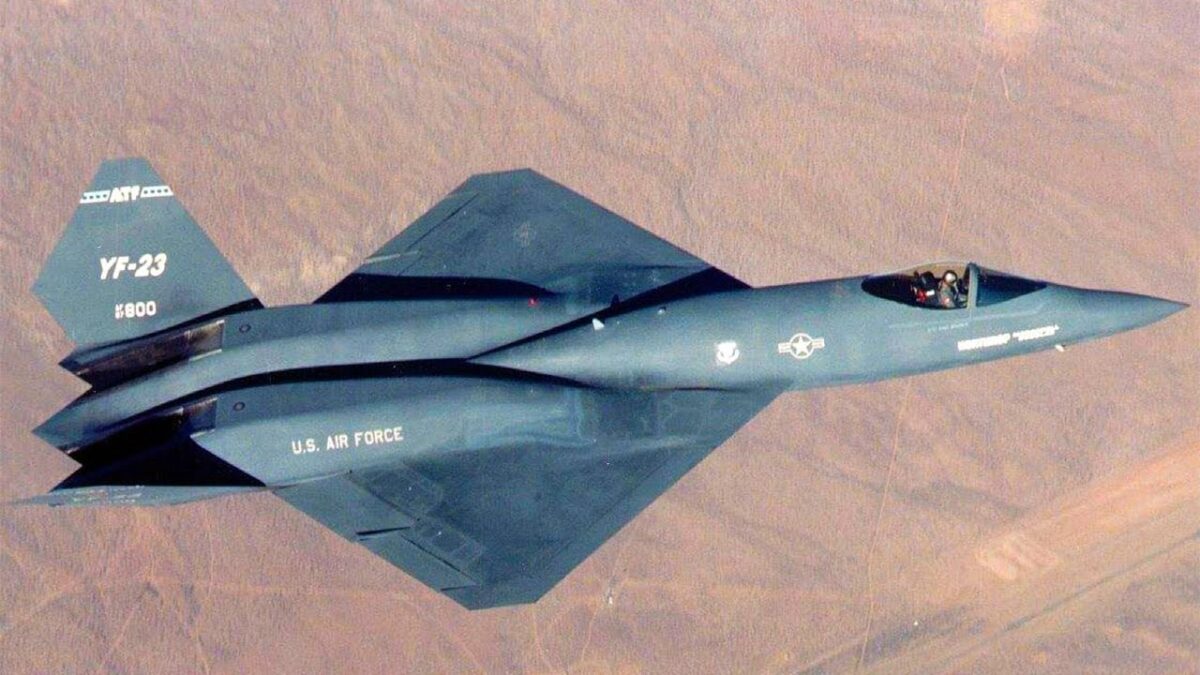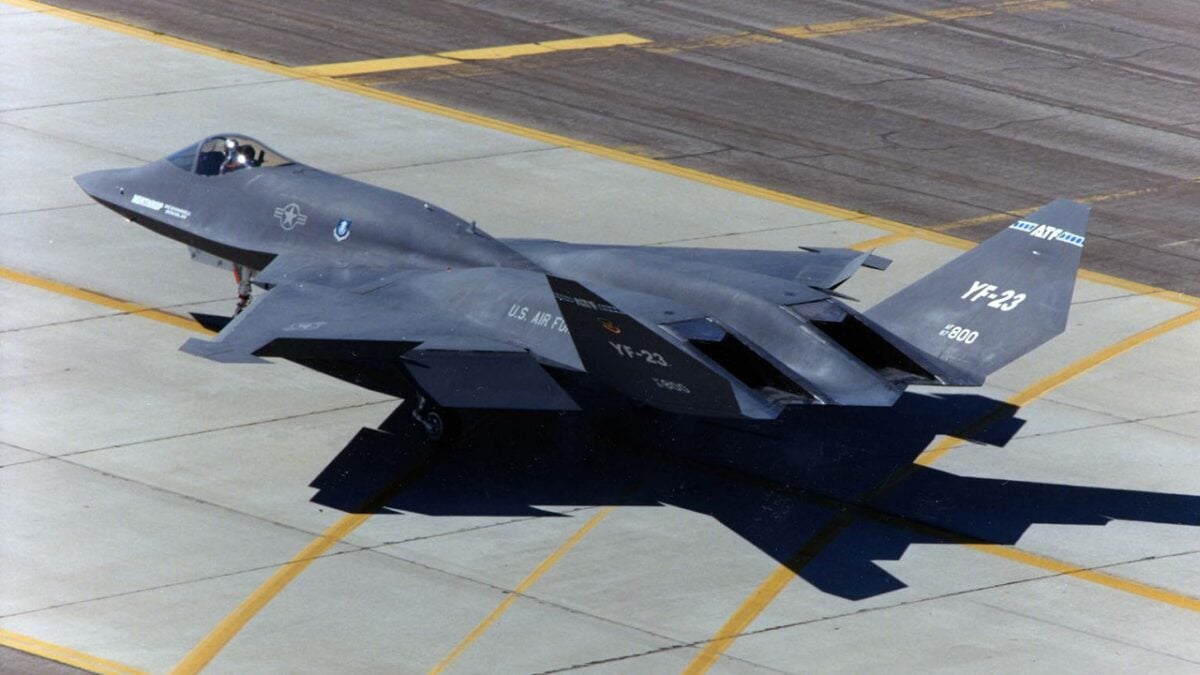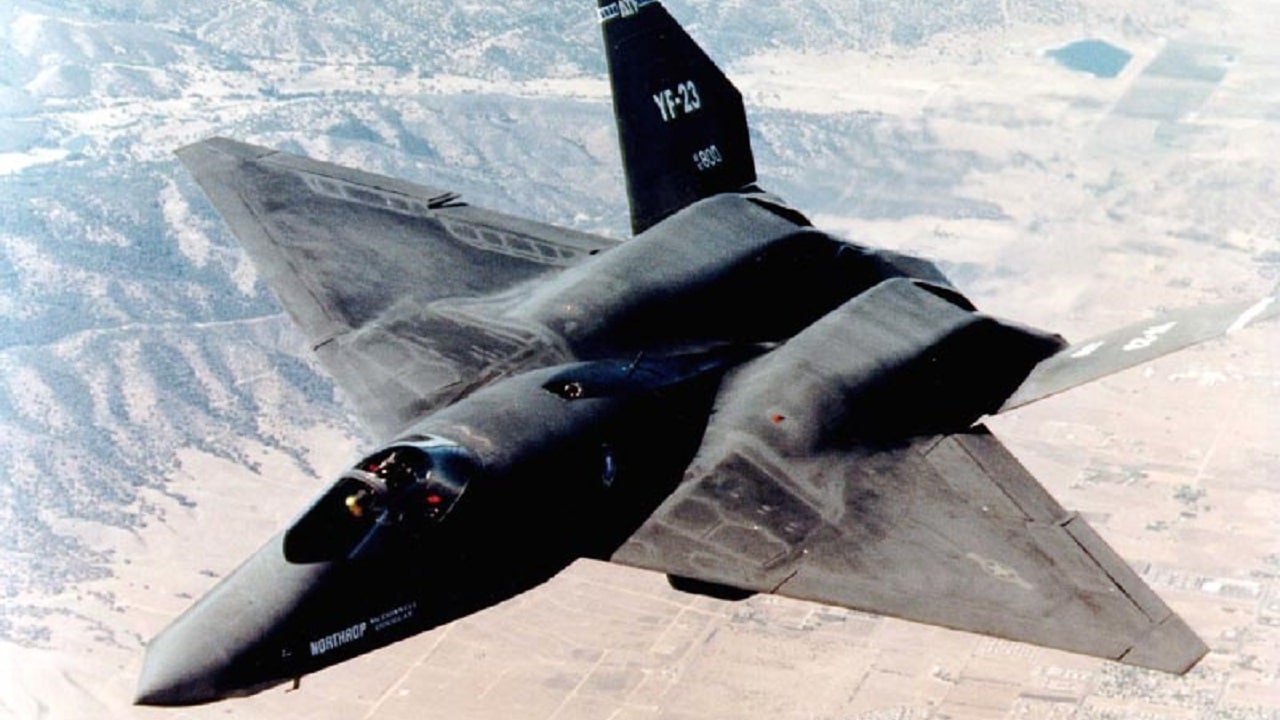The F-22 Raptor is one of the best fighter jets to ever fly, with insanely capable stealth capabilities. And yet, the YF-23 was a competitor to the F-22 and could have taken the Raptor’s place. Here is what one expert had to say on the subject: By the 1980s, the Soviet Union was exhausted. Unable to keep up with the United States, bogged down in Afghanistan, and barely able to contain the Chernobyl disaster – the Soviet Union was crumbling. Yet, to the United States, the Soviet Union appeared as fearsome as ever, with new weapons systems rolling off the production line and an ever-expanding arsenal of nuclear missiles. The U.S., compelled by what they viewed as a capable adversary, began considering the next generation of fighter aircraft – something that would render advanced Soviet jets, like the Su-27 and MiG-29, obsolete.
America Advances Its Air Power
With prescient foresight, USAF war planners wanted their newest fighters to incorporate novel technologies. Stealth, for example, was fundamental to the then-under development F-117 Nighthawk and B-2 Spirit programs. Still, the U.S. lacked a stealth fighter (the F-117 was an attack aircraft, not a fighter, despite the “F” designation). The USAF also wanted their new jet to have “supercruise” ability, that is the ability to reach supersonic speeds without using afterburners. Flying with the benefit of supercruise, a fighter could catch enemy fighters, without using afterburners, thus saving the fuel required for a dogfight.
The USAF’s vision for a new fighter was distilled into the Advanced Tactical Fighter (ATF) competition. Northrop and Lockheed Martin both entered bids to win the extremely lucrative contract, which at the time was believed to be for about 750 advanced (and expensive) fifth-generation fighters.
The YF-23 Was Worthy But Lost Out to its Competition
Lockheed entered the YF-22, which won the contract and has since been developed into the F-22 Raptor. Northrop’s submission, the YF-23, despite losing, was a phenomenal airplane. Indeed, the YF-23 lost the contract in large part due to “politics,” rather than any sort of performance deficiency; the YF-23 could keep up.
The YF-23 looked like a vehicle from science-fiction, maybe Independence Day or something. With a distinct trapezoidal wing, a dropping duckbill-shaped nose, a pushed-forward cockpit, and a V-shaped tail, the YF-23 cut a memorable image. Northrop only made two YF-23s. The first, named Black Widow II, relied on two Pratt & Whitney engines to reach a top speed of Mach 1.43. The second YF-23, nicknamed Grey Ghost, featured General Electric YF120 engines and could hit Mach 1.6.
Whereas the YF-22 featured thrust vectoring technology, the YF-23 had conventional fixed engine nozzles. Resultantly, the YF-22 was the more maneuverable aircraft. Although, thrust vectoring nozzles increase a jet’s radar cross-section, meaning the YF-23 had better stealth performance than the YF-22. The YF-23 also outperformed the Lockheed fighter concerning operational range. Yet the Northrop team fell short where, perhaps, it counts most: marketing and reputation.
Northrop was in the Pentagon’s dog house, as the B-2 program had been delayed and over budget. Additionally, Lockheed really made an effort to wow Pentagon decision-makers during the ATF’s flight testing phase; Lockheed went hard – operating the YF-22 at high angles of attack, firing missiles, yanking 9g maneuvers. The Pentagon was impressed. Northrop on the other hand, approached the flight tests more reservedly, cautiously. Could the YF-23 have kept up? Probably, yes. We’ll never know because Lockheed won the contract and the YF-23 was mothballed.

Image of YF-23 in fight. Image Credit: Creative Commons.

Northrop-McDonnell Douglas YF-23. (U.S. Air Force photo)
In a twist of irony, Lockheed’s F-22 development would hit a series of delays while going way over budget – leaving some to wonder: was the YF-23 the better plane?
Harrison Kass is the Senior Defense Editor at 19FortyFive. An attorney, pilot, guitarist, and minor pro hockey player, he joined the US Air Force as a Pilot Trainee but was medically discharged. Harrison has degrees from Lake Forest College, the University of Oregon, and New York University. He lives in Oregon and listens to Dokken. Follow him on Twitter @harrison_kass.

